#parthians
Photo
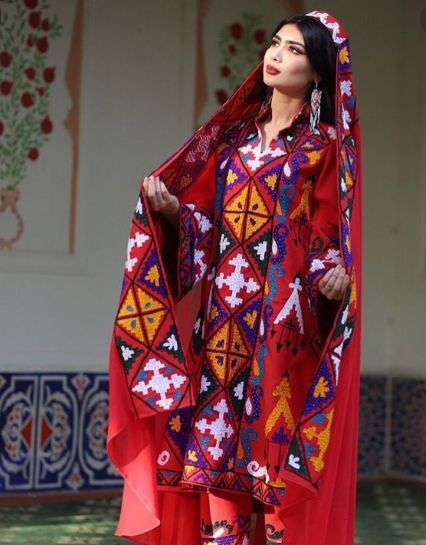

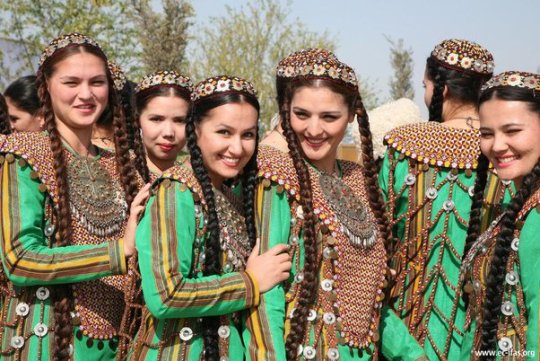
Are Tajiks more related to Iranians/Afghanis or Kazakhs/Mongolians?
Tajiks are an ethnic group primarily found in Central Asia, particularly in modern-day Tajikistan, Afghanistan, and Uzbekistan. They speak the Tajik language, which is a dialect of Persian (Farsi) and are generally considered to be closely related to Iranians in terms of language, culture, and history.
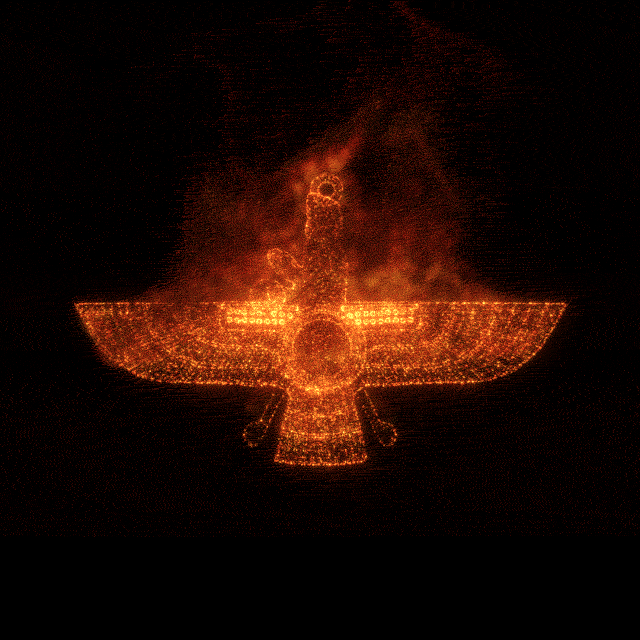
Tajiks and Mongols are two distinct ethnic groups with different origins and histories. While there may have been some interaction and influence between the two groups over the centuries, there is no significant genetic or linguistic relationship between them.
The Tajik language is a member of the Iranian branch of the Indo-European language family, which is the same branch as Persian (Farsi). The grammar, syntax, and vocabulary of Tajik are similar to those of Persian, and the two languages are mutually intelligible to a significant extent.
Culturally, Tajiks have been heavily influenced by Persian culture over the centuries, particularly during the period of the Samanid dynasty (9th-10th centuries CE), which was based in what is now modern-day Uzbekistan and Tajikistan. The Samanid rulers were Persian-speaking and promoted Persian culture, literature, and art in their territories, which had a lasting impact on the region.
In terms of history, the lands inhabited by Tajiks were historically part of the greater Iranian cultural and political sphere, with ties to various Persian empires and dynasties such as the Achaemenids, Parthians, Sassanids, and Safavids. The region was also influenced by Islamic culture and traditions, which further connected it to the wider Iranian world.
Tajiks and Iranians share a close linguistic, cultural, and historical relationship, with the Tajik people being considered a branch of the greater Iranian cultural and linguistic family.
#tajiks#mongols#asia#central asia#persian#perisan culture#ethnic#achaemenids#parthians#sassanids#uzbekistan#samanid#indo european#kemetic dreams#ethnic diversity#ethnic studies
18 notes
·
View notes
Text

My son sent me this. I understand the Crassus joke but don’t get the Minecraft joke. My boy gets the Minecraft joke but can’t remember who Marcus Crassus is…..
#humour#memes#history#minecraft#rome#roman#spqr#triumvirate#marcus crassus#battle of carrhae#parthians#cataphracts
9 notes
·
View notes
Text
Fantastic find, even if it isn't the lost city of Natounia. Looks like a substantial area for excavation. I don't know much about the Parthians. Looking forward to learning more.
5 notes
·
View notes
Text
Iran
Iran is a country located in the Middle East, bordered by Armenia, Azerbaijan, Turkmenistan, Afghanistan, Pakistan, and Iraq. It has an area of 1,648,195 square kilometers, making it the 17th largest country in the world. With a population of approximately 84 million, Iran is the 18th most populous country globally. Iran is known for its rich history and culture, with its ancient Persian empire…
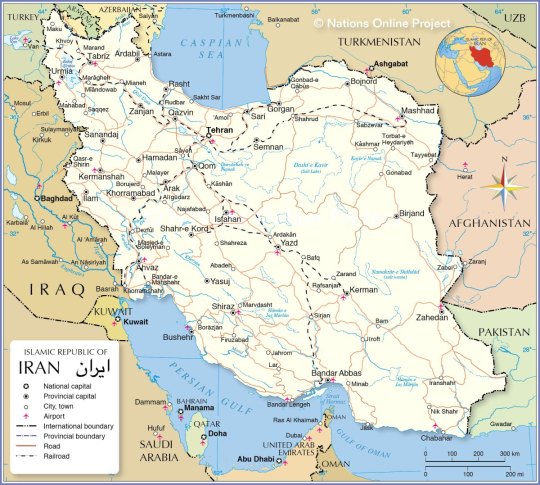
View On WordPress
#Achaemenids#Alexander the Great#Ayatollah Ruhollah Khomeini#Islamic#Medes#Middle East#Mohammad Reza Pahlavi#Parthians#Reza Shah Pahlavi#Safavids#Sassanids#Shah
1 note
·
View note
Photo
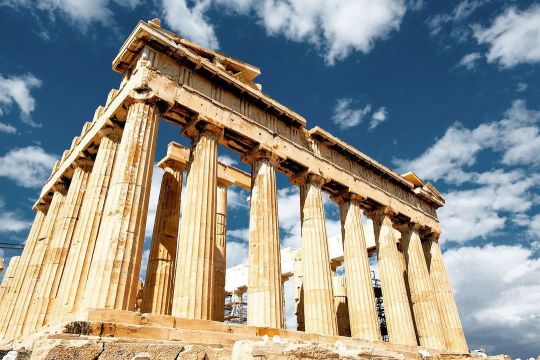
Parthenon, Greece 🇬🇷🏛️ Discover Greece,with the best prices! 💲 🚙✈️🌴 LINK IN BIO 🌴✈️🚙 Tag a friend, who needs to see this 👀 Follow @holidaysworldwide4u for more! Don’t Forget to Like and Comment 📳📲 Amazing Offers ⭐️
Fast Booking 📕
TONS of Tour Destinations 🏝️
Best Tour Guide 🌏 🌐 holidaysworldwide4u.com —————————— #holidaysworldwide4u #parthenon #greece #athens #acropolis #parthsamthaan #travel #parthisanurag #athensgreece #ancientgreece #parth #anuragbasu #parthianforever #parthians #parthsamthaanslays #visitgreece #kaisiyehyaariaan #anurag #travelphotography #manikmalhotra #temple #architecture #athena #photography #greek #acropolisview #anupre #visitathens https://www.instagram.com/p/CkQLlI0gTSs/?igshid=NGJjMDIxMWI=
#holidaysworldwide4u#parthenon#greece#athens#acropolis#parthsamthaan#travel#parthisanurag#athensgreece#ancientgreece#parth#anuragbasu#parthianforever#parthians#parthsamthaanslays#visitgreece#kaisiyehyaariaan#anurag#travelphotography#manikmalhotra#temple#architecture#athena#photography#greek#acropolisview#anupre#visitathens
0 notes
Text
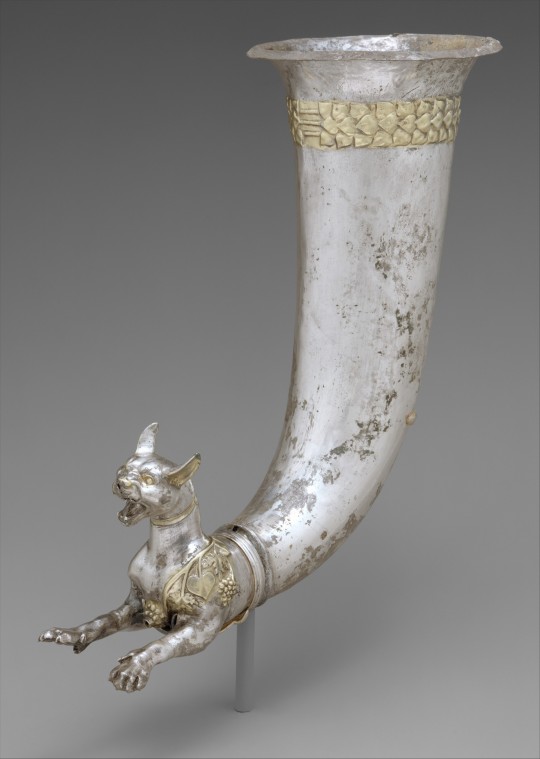
Rhyton Terminating in the Forepart of a Wild Cat
Iran, Parthian, ca. 1st century BCE
Dating from the Parthian period, this silver rhyton is a fine example of the enduring influence of Hellenistic culture, which owes much to the artistic traditions of Achaemenid Iran. The horn-shaped vessel ends in the forepart of a panther; a spout for pouring is in the middle of the chest. A gilded fruit-laden grapevine winds around the panther's chest; at the other end of the rhyton, an ivy wreath encircles the rim. These are the symbols of the Greek wine god Dionysus, whose cult spread eastward with the invasion of Alexander. Dionysiac images—panthers, grapevines, and dancing females—were absorbed by the Parthians and continued to appear in the art of Near Eastern cultures in the Sasanian period (A.D. 224–651).
173 notes
·
View notes
Note
salve amice! just wanted to spread the word, i’m having a little evening get together on the ides of march to celebrate my upcoming campaign in the east. nothing big just most of the senate and my family and my household and my bestie mark and my other bestie brutus. lmk if you wanna come we were gonna have falernian wine :) the whole senate’s gonna be there it’s gonna be crazy i love having so many friends who’d never hurt me. remember its the evening of the ides so we were thinking… kick things off a couple of hours after the senate meeting ends? haha
salveee gaius julius that sounds killer. wait. i mean like. a party to die for. wait. i mean that sounds dead fun
#we popping the biggest bottles when caesar leaves for his parthian campaign after the ides of march#ides of march#big c#beeps
131 notes
·
View notes
Text
Hello ranger’s apprentice fandom can we talk real quick about the stupidest thing Flanagan ever wrote
It’s about the bows. Yanno, the rangers’ Iconique™️ main weapon. That one. You know the one.
Flanagan. Flanagan why are your rangers using longbows.
“uh well recurve arrows drop faster” BUT DO THEY. FLANAGAN. DO THEY.
the answer is no they don’t. Compared to a MODERN, COMPOUND (aka cheating) bow, yes, but compared to a longbow? Y’know, what the rangers use in canon? Yeah no a recurve actually has a FLATTER trajectory. It drops LATER.
This from an article comparing the two:
“Both a longbow and a recurve bow, when equipped with the right arrow and broadhead combination, are capable of taking down big game animals. Afterall, hunters have been doing it for centuries with both types of bows.
However, generally speaking and all things equal, a recurve bow will offer more arrow speed, creating a flatter flight trajectory and retain more kinetic energy at impact.
The archers draw length, along with the weight of the arrow also affect speed and kinetic energy. However, the curved design of the limbs on a recurve adds to its output of force.”
It doesn’t actually mention ANY distance in range! And this is from a resource for bow hunting, which, presumably, WOULD CARE ABOUT THAT SORT OF THING!
Okay so that’s just. That’s just the first thing.
The MAIN thing is that even accounting for “hur dur recurves drop faster” LONGBOWS ARE STILL THE STUPID OPTION.
Longbows, particularly and especially ENGLISH longbows, are—as their name suggests—very long. English longbows in particular are often as tall or taller than their wielder even while strung, but especially when unstrung. An unstrung longbow is a very long and expensive stick, one that will GLADLY entangle itself in nearby trees, other people’s clothes, and any doorway you’re passing through.
And yes, there are shorter longbows, but at that point if you’re shortening your longbow, just get a goddamn recurve. And Flanagan makes a point to compare his rangers’ bows to the Very Long English Longbow.
Oh, do you know how the Very Long English Longbow was mostly historically militarily used? BY ON-FOOT ARCHER UNITS. Do you know what they’re TERRIBLE for? MOUNTED ARCHERY.
Trust me. Go look up right now “mounted archery longbow.” You’ll find MAYBE one or two pictures of some guy on a horse struggling with a big stick; mostly you will actually see either mounted archers with RECURVES, or comparisons of Roman longbow archers to Mongolian horse archers (which are neat, can’t lie, I love comparing archery styles like that).
Anyway. Why are longbows terrible for mounted archery? Because they’re so damn long. Think about it: imagine you’re on a horse. You’re straddling a beast that can think for itself and moves at your command, but ultimately independently of you; if you’re both well-trained enough, you’re barely paying attention to your horse except to give it commands. And you have a bow in your hands. If your target is close enough to you that you know, from years of shooting experience, you will need to actually angle your bow down to hit it because of your equine height advantage, guess what? If you have a longbow, YOU CAN’T! YOUR HORSE IS IN THE WAY BECAUSE YOUR BOW IS TOO LONG! Worse, it’s probably going to get in the general area of your horse’s shoulder or legs, aka moving parts, which WILL injure your horse AND your bow and leave you fresh out of both a getaway vehicle and a ranged weapon. It’s stupid. Don’t do it.
A recurve, on the other hand, is short. It was literally made for horse archers. You have SO much range of motion with a recurve on horseback; and if you’re REALLY good, you know how to give yourself even more, with techniques like Jamarkee, a Turkish technique where you LITERALLY CAN AIM BACKWARDS.
For your viewing enjoyment, Serena Lynn of Texas demonstrating Jamarkee:
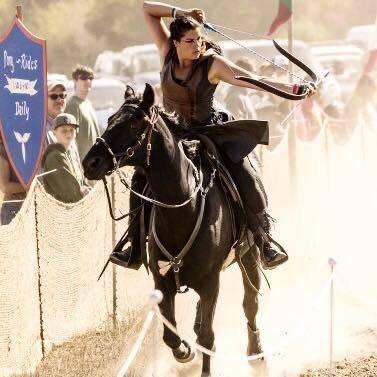
Yes, that’s real! This type of draw style is INCREDIBLY versatile: you can shoot backwards on horseback, straight down from a parapet or sally port without exposing yourself as a target, or from low to the ground to keep stealthy without banging your bow against the ground. And, while I’m sure you could attempt it with a longbow, I wouldn’t recommend it: a recurve’s smaller size makes it far more maneuverable up and over your head to actually get it into position for a Jamarkee shot.
A recurve just makes so much more SENSE. It’s not a baby bow! It’s not the longbow’s lesser cousin! It’s a COMPLETELY different instrument made to be used in a completely different context! For the rangers of Araluen, who put soooo much stock in being stealthy and their strong bonds with their horses, a recurve is the perfect fit! It’s small and easily transportable, it’s more maneuverable in combat and especially on horseback, it offers more power than a longbow of the same draw weight—really, truly, the only advantage in this case that a longbow has over the recurve is that longbows are quicker and easier to make. But we KNOW the rangers don’t care about that, their KNIVES use a forging technique (folding) that takes several times as long as standard Araluen forging practices at the time!
Okay.
Okay I think I’m done. For now.
#to be VERY clear. I Am Not An Actual Expert.#i AM however drawing from my own experience and research#and literally i can find Zero literature about recurve arrow flights dropping faster than longbows#all i could find was that recurve range is worse compared to compound bows#which. OBVIOUSLY. compound bows CHEAT.#(said lovingly. ish. if you use a compound more power to you but also It’s Doing All The Work For You.)#this article was literally all i could find from a couple hours’ search comparing recurves and longbows#anyway recurves are cool. flanagan why did you do recurves so dirty.#for that matter why are all your women blonde.#(i’m not including brotherband here sorry)#(but also why did it take a spinoff series for him to create a named female character that wasn’t a blonde)#(flanagan explain)#god these books have so many problems. truly this is my ‘i could fix him’#thank you flanagan for getting me into this special interest. now Tell Me Why You Did It Wrong.#rangers apprentice#anyway if you REALLY want to read about some bangin historical horse archers#look up the parthians :)#specifically how they fucking Decimated an entire roman contingent :)#crassus getting absolutely demolished by mounted archer parthians is definitely my favorite bit of roman trivia
71 notes
·
View notes
Note
So the Silk Roads were a thing during the Roman Empire and also helped spread Buddhism throughout China, yes? So my question is... is there any evidence of Buddhism being a thing in any part of the Roman Empire?
Ah, you're asking whether Buddhist missionaries went west instead of east.
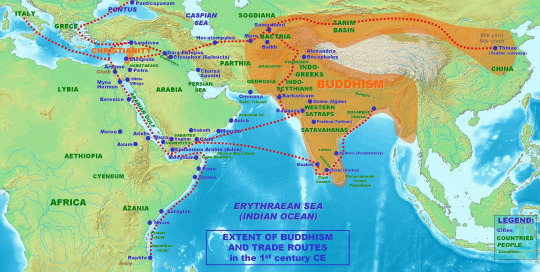
Yes, there is evidence of it. Mostly in the eastern parts of the Roman Empire (especially Greece and Egypt) that were easier for missionaries and merchants to access via the seaborn route from the Indian Ocean to the Red Sea and then the Mediterranean, and where there was already some cultural (and thus linguistic) familiarity due to previous connections between the Hellenic-Persian world and the Indian subcontinent.
It doesn't seem to have been as common as the eastern route, both because it involved quite a bit of long-distance travel before missionaries could get to Roman audiences, and because the Parthian/Sassanid Empires seem to have acted as a bit of a buffer, absorbing a lot of the Buddhist missionary energy. But there were plenty of Greek-speaking Roman citizens who were familiar with the precepts of Buddhist philosophy and religion.
#history#ancient history#roman empire#parthian empire#sassanid empire#indian history#history of religion#buddhism
78 notes
·
View notes
Photo
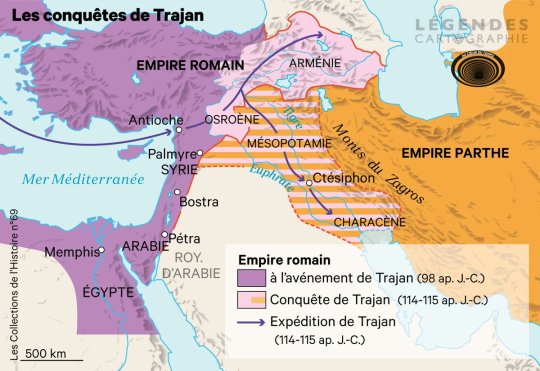
The rivalry between the Roman and Parthian empires, the conquests of Trajan.
by LegendesCarto
#maps#LegendesCarto#twsourced#1st-3rd century#1st century#2nd century#roman empire#parthian empire#trajan
83 notes
·
View notes
Text
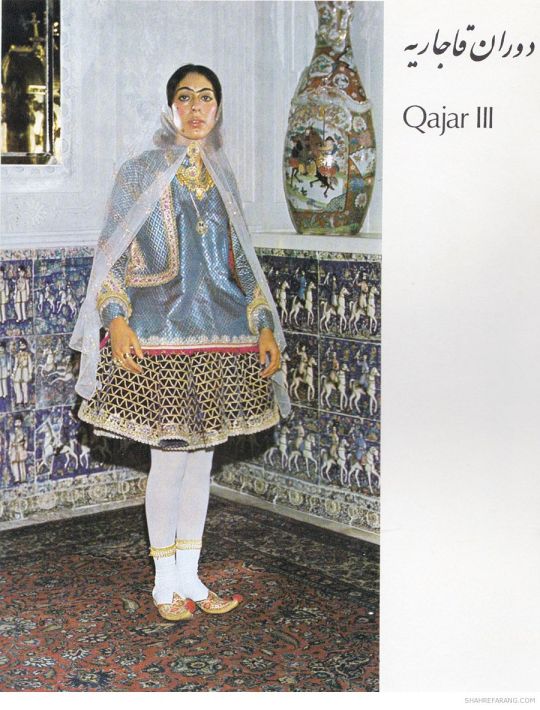

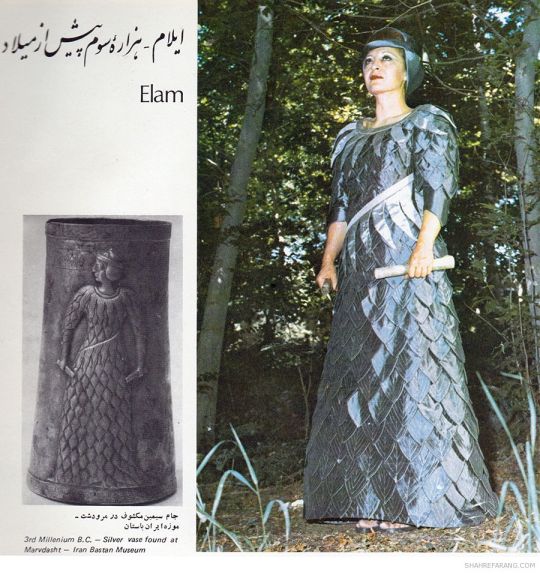





Original and reproduction of women’s clothing in Iran – from different regions and historical eras. The images are taken from the book Negar-e Zan, published in Tehran in 1973 by the International Women’s Club of Iran. [via shahrefarang.com]
154 notes
·
View notes
Text
AFTERNOON CONVERSATION
Sicinnius once said that Crassus was a man who had hay on his horns. That's the kind of man you leave alone. Octavius worries anyway.
an excerpt of scene between Octavius, Crassus, Pompey, after the incident between Lucius Annalius and Crassus in Plutarch's Comparisons.
⭐ 300-ish words, GEN w/ some kind of subtext with Octavius' feelings about Crassus
‘What happened,’ says Octavius, ‘to your hand?’
Pompey and Crassus turn to look at him.
‘Didn’t you hear?’ says Pompey, grinning. He moves like he intends to put his arm around Crassus’ shoulders with easy familiarity, like friends, like comrades, like two soldiers, but Crassus stops him with a ‘don’t fucking touch me,’ that Pompey rolls his eyes at before turning his attention to Octavius.
‘Marcus got Lucius Annalius right in the face,’ he says. ‘Blood everywhere, it was incredible.’
Octavius listens, but he can’t quite pull his gaze away from where the skin had split across the third knuckle of Crassus’ hand. The blood there has since dried off, yet concern still crawls it’s way into his throat.
‘You should wrap it up, your hand, I could— ’ Octavius finds himself saying, and immediately wishes that the ground would split open and swallow him whole. Pompey looks at him, eyes widening slightly, and Crassus—
— Crassus reaches out, and for a single mortifying moment Octavius thinks he’s going to do something like mess up his hair the way a parent might do with a child, only Crassus’ hand lands on Octavius’ shoulder.
‘Your concern is endearing,’ says Crassus, ‘but you don’t need to worry. If you have time to spare, though, find out if Cassius is done playing wife to Cato’s nephew for the day. I want to talk to you both about something over dinner.’
‘Oh sure,’ Pompey says. ‘Talk.’
Crassus gives Octavius half a smile that only he can see, as if they’re sharing a private joke at Pompey’s expense. Then his hand leaves Octavius’ shoulder and he misses the feeling of it at once.
‘Go bother Clodius and Caesar,’ Crassus says to Pompey. ‘You’d get along well with that young man they have around now, Antony.’
‘Maybe I want to bother you,’ counters Pompey, and Octavius bites the inside of his mouth to keep from grinning as he falls out of step with the pair to turn down a street in direction of where Cassius might be.
31 notes
·
View notes
Text
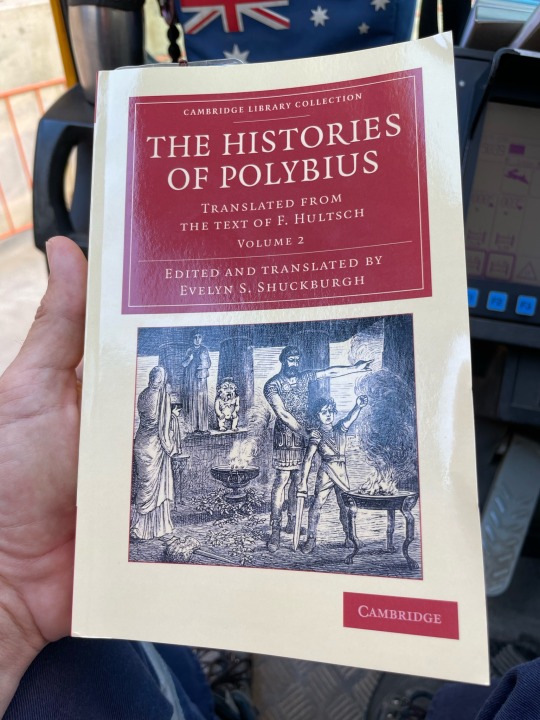
A delve into a primary source. A bit of a weighty tome but makes the train rides fly by.
#books#non fiction#history#roman history#primary source#histories of polybius#fall of new carthage#end of second punic war#publius cornelius scipio africanus#seleucids#parthians#rome#roman#spqr
1 note
·
View note
Photo

Persian / Parthian cast bronze fibula
5th – 3rd century BC
#fibula#brooch#Persian#persa#Perzisch#Parthian#parta#Parthisch#cast bronze#bronze#brons#Achaemenid#Achaemenian#aquemênida#Achaemenidisch#arm#braço#hand#mão
231 notes
·
View notes
Text
The remote fortress of Rabana-Merquy in Iraqi Kurdistan may have been more than just a stronghold. Evidence has emerged which suggests the ancient site may also have been a sanctuary dedicated to the water goddess Anahita, her sacred waterfall lying alongside a fire temple.
18 notes
·
View notes
Text

Arch of Septimius Severus
Forum Romanum
early 3rd century CE
Rome, July 2012
#Forum Romanum#Arch of Septimius Severus#Roman legionary#Roman army#figurine#ancient#Roman#art#detail#Parthian war#3rd century CE#Rome#my photo
45 notes
·
View notes